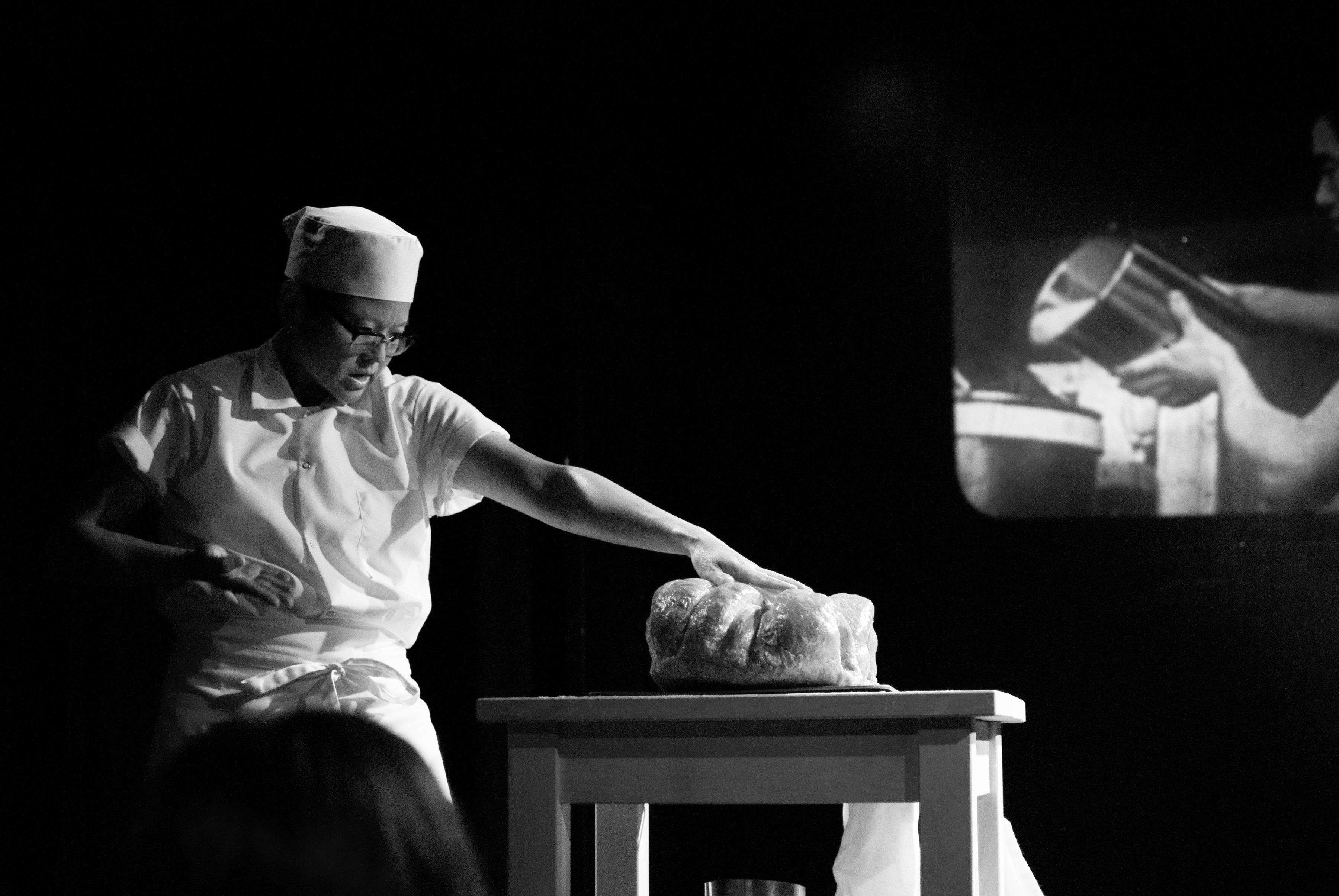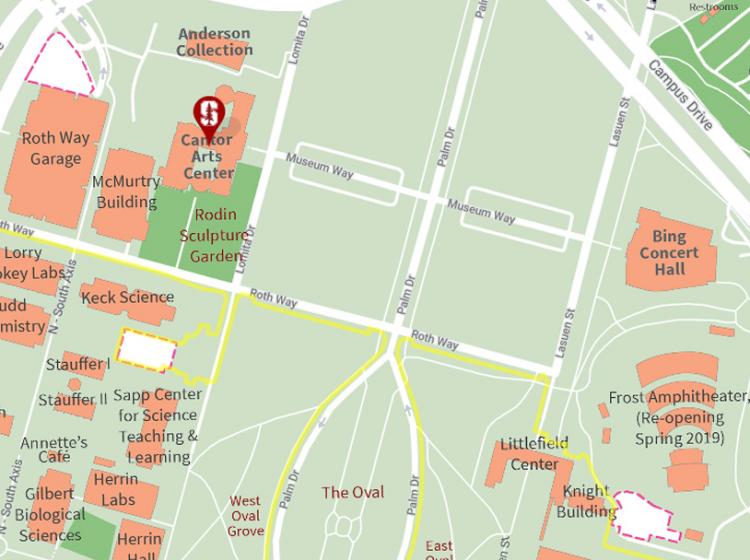Cantor Arts Center
328 Lomita Drive at Museum Way
Stanford, CA 94305-5060
Phone: 650-723-4177

TT Takemoto (American), Looking for Jiro, 2011. Single-channel digital video with sound: performance, found footage; 5:45 min. © TT Takemoto. Courtesy of the artist and Catharine Clark Gallery, San Francisco. Photograph by Maxwell Leung
This single gallery exhibition features two video works and two complementary series of small handmade objects and works on paper by San Francisco Bay Area-based artist TT Takemoto. Takemoto’s videos Looking for Jiro (2011) and On the Line (2018) uniquely center queer experiences of intimacy in prewar and WWII contexts. The Gentleman’s Gaman series (2009–23) and an installation of handcrafted kokeshi dolls (2023) offer sculptural, expanded modes of engagement with challenging and overlooked narratives in Asian American history, as reimagined by Takemoto.

TT Takemoto (American), On the Line, 2018. Single-channel digital video with sound: hand-processed 8mm/16mm film, paint, found footage, digital video; 6:43 min. © TT Takemoto. Courtesy of the artist and Catharine Clark Gallery, San Francisco.
Takemoto’s video Looking for Jiro, a mashup of drag king performance, US war propaganda footage and body building footage, and the associated Gentleman’s Gaman series are a tribute to Jiro Onuma, a gay Japanese American man incarcerated during WWII who worked in the mess hall and had a penchant for muscle men. On the Line, a meditation on Japanese American female cannery workers in prewar San Diego, is inspired by Isa Shimoda, whose restaurant is imagined by the artist as a space for same-sex intimacy among the women workers while the fishermen were out to sea. A sculptural installation of glass and polished earth figures iterates on the form of Japanese kokeshi dolls that appear in the video and serves as a metaphor for the lives haunted by the trauma of incarceration. The moving themes and material experimentation of Takemoto’s work highlight the tactile and sensory dimensions of queer Asian American histories and their ancestral legacies—real and imagined.
TT Takemoto (American), On the Line, 2018. Excerpt from video. Single-channel digital video with sound: hand-processed 8mm/16mm film, paint, found footage, digital video; 6:43 min. © TT Takemoto. Courtesy of the artist and Catharine Clark Gallery, San Francisco.
TT Takemoto (American), Looking for Jiro, 2011. Excerpt from video. Single-channel digital video with sound: performance, found footage; 5:45 min. © TT Takemoto. Courtesy of the artist and Catharine Clark Gallery, San Francisco.


The Cantor Arts Center is located at the intersection of Museum Way and Lomita Drive in the heart of the arts district on the Stanford campus. The Cantor faces the Bing Concert Hall across Palm Drive, northwest of The Oval and the Main Quad.

Parking is limited. Stanford has a new contactless process to pay for parking, using the ParkMobile app, website, or phone. Prior to your visit, we recommend you visit the Stanford Transportation website to learn more about the updated visitor parking process.
